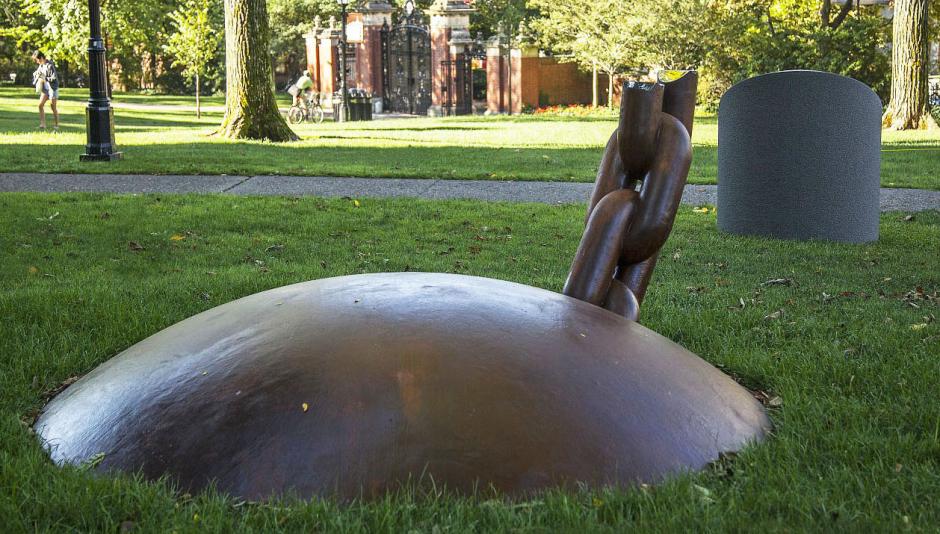PROVIDENCE, R.I. [Brown University] — As part of its 250th anniversary Fall Celebration, Brown University will dedicate its new Slavery Memorial, a work by the American sculptor Martin Puryear. The dedication ceremony, open to the public, begins at 3 p.m. Saturday, Sept. 27, 2014, on the Front Green of the University campus.
Brown President Christina Paxson, B. Anthony Bogues, professor of Africana studies and director of the Center for the Study of Slavery and Justice, and Puryear will offer remarks during the dedication ceremony.
Slavery and Justice, the final report of a three-year project studying the relationship of the University and the State of Rhode Island to the transatlantic slave trade, recommended a number of actions to the University, including creation of a permanent memorial. The “difficult and awkward” challenge of memorializing traumatic histories, the report said, “is to create a living site of memory, inviting reflection and fresh discovery without provoking paralysis or shame.”
A 10-member commission of University representatives and members of the public appointed by the governor of Rhode Island and the mayor of Providence considered how the slavery issue might be memorialized. The University’s Public Art Committee recommended Puryear for the project, and the Brown Corporation commissioned the work in February 2012.
Puryear’s memorial evokes a ball and broken chain, fashioned of cast iron, sinking into the Earth. The ends of the broken link are finished to a mirror-like surface, reflecting sky, sun, trees, life. A stone plinth installed near the walkway carries the legend, in part:
In the eighteenth century slavery permeated every aspect of social and economic life in Rhode Island. Rhode Islanders dominated the North American share of the African slave trade, launching over a thousand slaving voyages in the century before the abolition of the trade in 1808, and scores of illegal voyages thereafter. Brown University was a beneficiary of this trade.
The memorial is sited on the Front Green — the “Quiet Green” — between Hope College and Carrie Tower. This site was recommended by Brown’s Public Art Committee for its prominence, especially during Convocation and Commencement, and for its historic significance as the site of the University’s earliest building.
Who
Christina Paxson, 19th president of Brown University
Jo-Ann Conklin, director of the David Winton Bell Gallery
Sculptor Martin Puryear
B. Anthony Bogues, professor of Africana studies and director of the Center for the Study of Slavery and Justice
What
Dedication of Brown University’s Slavery Memorial, a work by Martin Puryear
Where
The Front Green, near Hope College
Brown University, Providence, R.I.
When 3 p.m. Saturday, Sept. 27, 2014

